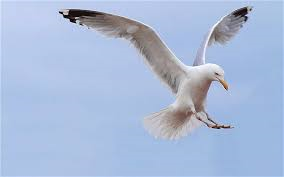
Already some signs of spring are in the air – daffodils are starting to show and the sun is making a more regular appearance. But as anyone who has lived in Aberdeenshire’s coastal areas for any length of time will tell you, it’s also the beginning of seagull season. Love them or hate them, their breeding season is about to begin, and nowadays that’s often in our towns and villages rather than coastal cliffs.
One of the most effective ways to have an effect, lessen attacks on humans and pets and lower noise levels on summer nights, is to target the birds at source – by preventing them nesting and laying their eggs.
Now is the time to start thinking about carrying out preventative works to properties, particularly where there has been a problem with seagulls nesting in the past.
A range of measures are available and the council has a preferred contractor, Pro Check, which members of the public can contact for help and advice on the most cost-effective solutions.
These can include roof-mounted spikes or nets to deter landing and nesting, or even the use of a gel which makes birds think a surface is on fire.
The council has no legal powers to force owners to carry out preventative works, nor to undertake treatment during nesting.
It is reliant on the cooperation of owners and occupiers to firstly recognise the issue, then to take appropriate steps as early as possible.
The council takes action at many of its own properties, including schools and public buildings, where there is a need for it. It has also employed falconers at some premises and in the town centres of Stonehaven, Peterhead and Fraserburgh to fly hawks, which puts birds off settling in an area due to the presence of a predator. It is intended to continue flying hawks this year, but there is a limited budget for this.
The council does not advocate the killing of gulls and their young, and so the focus at the moment is on deterrents, preventative measures and on nest and egg removal. All of this should have a long-lasting effect on the local gull population, but only if communities work together – this is not solely the council’s responsibility and we all need to share a common goal of reducing the nuisance caused.
Action needs to be planned early – once the chicks have hatched it’s too late to do much to reduce the gull numbers. The council has limited financial resources available to tackle this issue, but will provide support and advice wherever possible.
We regularly receive complaints about gulls in our towns and villages, whether that relates to the noise they make, attacks on humans and pets or simply mess from their droppings, but people can start to claim their streets back from the birds. At a basic level this can mean being mindful of how litter and food waste is disposed of.
Nesting by gulls in communities normally takes place between April and June, but can happen much earlier in milder weather.
Further information on dealing with nuisance gulls, including the legal position and contact details and prices for Pro Check, is available on the council’s website, at: http://bit.ly/1oDdgeX
